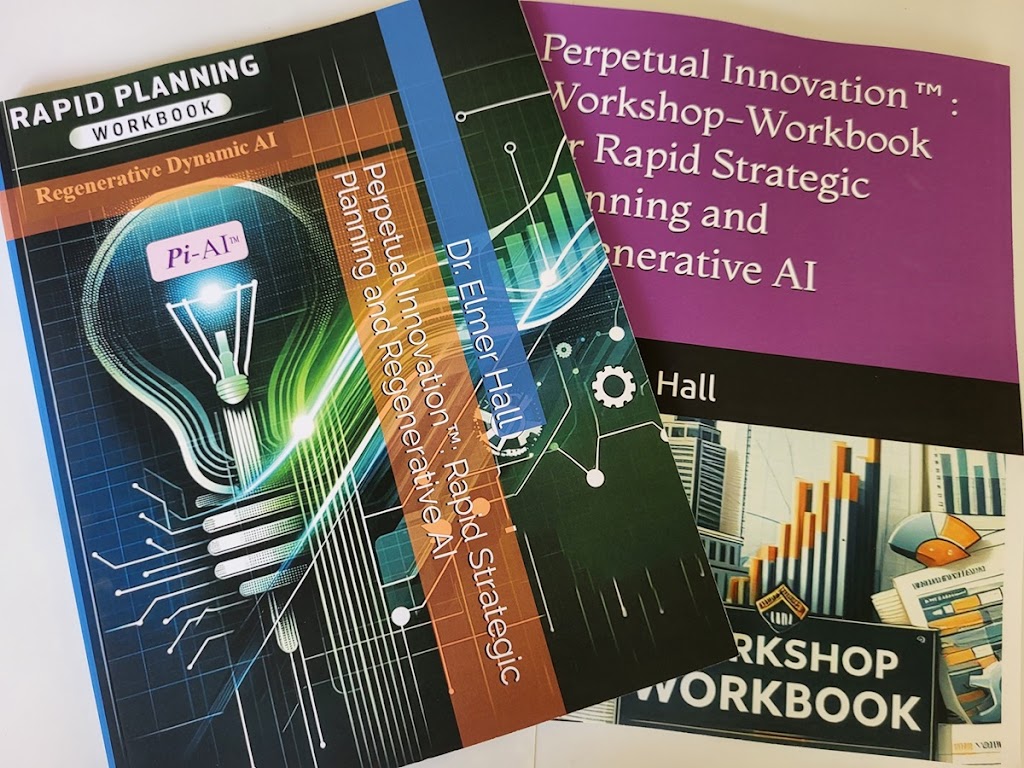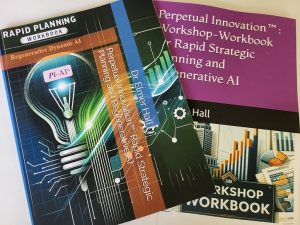Every business
needs to do planning and reporting. The trick for each organization is to do
the right amount of planning. You can’t spend all your time planning, and you
can’t completely avoid planning. Ideally you should work the planning process
around the reporting and accounting that you have to do anyway: mainly tax reporting
that culminates at the end of the tax year. The approach visualized in Figure 1
organizes your year so you can build a corporate calendar and activity
checklist that matches your needs.

Even though an
annual planning process, with a calendar and checklist, is important,
occasionally things will happen that require instant and immediate planning.
You might have developed contingency plans for certain possible events, like a hurricane
disaster recovery plan, but occasionally the world will dramatically change
around you such that you are thrown into a situation where everything – and
even the existence of the organization – is thrown up into uncertainty. The
COVID pandemic is such an exogenous event. All aspects of the long-term
direction of the organization must be revisited, and the near-term approach for
survival needs to be mapped. Survival Planning will be addressed later.
All organizations
have a similar process that they should execute, a process that spreads
the planning out over the year. It is often easiest to break the major planning
activities into four quarters. That doesn’t mean that you work all quarter on a
specific planning activity, just make sure you do it during that quarter. For
example, you might have a summer weekend retreat for brainstorming new products
and services.
Unfortunately,
most small organizations, especially small non-profit organizations, do not take
the time, or schedule the time, to do the most critical planning. In the worst
case, they may miss critical deadlines (IRS filings, for example) and even jeopardize
the continuity of the organization. Think of this as non-compliance, i.e., not
doing the things that are required of any business or non-profit organization.
Large companies
use the corporate strategic planning process as a tool to continually focus on
their goals and objectives, to understand where they are going and to engage
employees in building the business.
Normally conducted on an annual basis, the process takes several months
from initial data collection to the completion of the corporate business plan,
annual report and budget. With few
exceptions, if it isn’t in the plan and the budget, it won’t get done.
Figure 1 depicts a general
planning process and how the planning activities for the next year begin soon after
the operations of the current implementation year has begun in the first
quarter. Smaller organizations can simplify this process somewhat, but still
should do similar activities.
Here’s how the planning process would
work on a quarter by quarter basis. Assume that the business operates on a calendar
year with December being the last month of the year, and January being the
first month of the next year.
·
Qtr 1, the implementation quarter. The 1st
quarter of the implementation year is when all the planning and budgeting from
last year needs to be implemented. This is a very busy time, hiring people,
buying stuff, launching initiatives. In short, there is no time for planning
during the implementation quarter, it is time to start executing the business
plan approved and funded during the prior planning year that culminated in an
approved business plan and budget.
·
Qtr 2, Spring Strategic Outlook, is a good time for
brainstorming: to do longer-term planning and new product development. Are
there new products or services that need development efforts in order to be
considered this planning year for launch next year? This is a good time to do a
Strengths-Weaknesses-Opportunities-Threats (SWOT) analysis if the environment
has changed significantly since the last SWOT analysis. Consider a rapid planning
and prototyping process like LEAN Canvas.
·
Qtr 3, Business Performance Assessment. After 6
to 9 months of the year, the organization should know how things are going. Is
everything on budget? Are changes working out? You should now be able to accurately
estimate the full year. This is the time to develop a proposed budget for next
year, especially for those things that are going as planned this year and
should continue uninterrupted next year. New products or major purchases for
next year’s budget consideration should be narrowed down and refined.
·
Qtr 4, Business Plan Development and finalized
budget. Quarter 4 is the major planning and reporting quarter. That is when the
best information of the year will be available. The full year numbers have to
be organized, reports to IRS completed, employment filings completed, etc.
Therefore, the end of the year is when the best information is available. As
part of that process is full financial statements and a proposed budget for
next year. The board of the organization needs to approve the budget for next
year and the plan that goes with it. (Note that the required reporting is not
due on the last day of the quarter, December 31 in this case, but all the past
years numbers should be very close if not exact, so federal and state reporting
in the first few days of the new year will be easily accomplished before
deadlines. Consequently, some of the final stages of the planning process
described for the 4th quarter might not be completed until the first
few weeks of the new year.)
· The next Implementation year begins with the new
plan and budget, so a scramble ensues to implement the plan and have a successful
new year.
Several
organizations and books provide resources and checklists for people who are
planning to launch a business. They generally don’t distinguish between a
for-profit and a non-profit because every organization needs to do the same
types of things: draft a business plan, accumulate startup funding, incorporate,
etc. Each year you should revisit this checklist to see what needs to be
updated. The planning process described in Figure 1 helps with updating the
business plan, the goals/objectives, the past financials, and the proposed
budget.
Here
are several links of startup checklists/resources and also compliance
checklists for Non-Profits.
·
Small
Business Administration Resources: www.SBA.gov
·
Small
Business Administration 10-Steps to Start a Business.
·
SCORE’s
Checklist for Non-Profit Organization
Startup.
·
Indiana
(IN.GOV) Best Practices Checklist for Non-Profits.
·
WildApricot’s
Compliance Checklist for Non-Profits.
·
Cullenan
Law’s Year-End Checklist. (5 categories)
·
RocketLawyer’s
How to keep your Non-Profit in Compliance:
a Checklist.
·
Wayfind’s
startup table/checklist (long but comprehensive).
·
BoardEffect’s
Checklist for starting a Non-Profit.
Metrics
All businesses need to have clear
metrics. How do you know that you are being successful? Revenues and net profits
are always good metrics, but you want to have more than that. For example, you have
to get the customers before you get the increased sales. There should be a
pipeline of customers. You can identify early if your pipeline is showing leaks
by various types of customer satisfaction checks. For non-profits, there may
not be “customers” but there will be key constituents; you don’t technically
have profits and net income; however, if you still need more
money coming in than expenses to maintain operations.
You may want to issue a certain number
of new products/services ever year, so you could look at the new products and
how well they are received.
Non-profits (NPs) have special
challenges. Many NPs sell products and services, even if they are frequently
discounted or subsidized compared to the full costs. They also may have donor funding,
grants, etc. And they usually have volunteers, sometimes a massive number of
volunteers compared to a few employees. Keeping a good accounting of the
volunteers, volunteer hours, and approximate savings from volunteers is
important for reporting and justification of how far you can stretch funding from
donors and grants.
As a Non-Profit, think about those
factors that influence people to select and donate to a cause. Organizations
that have high administrative expenses will have much less money to contribute
to the actual cause. Donors (and volunteers) who are reviewing the causes that
they will support look to see how charities are ranked and rated. People visit
these key sites, among others, to make charitable giving decisions:
·
CharityNavigator.org.
This site ranks charities within particular categories. This is the most
important site for someone considering which causes to select for charitable
giving.
·
GuideStar.org.
This site does a deeper dive into the non-profit, reporting, officers and programs.
·
Give.org, by
the BBB Wise Giving Alliance, provides a Better Business Bureau type of list
for complaints about Non-Profit organizations. Use this source carefully. A
very large national or international organization might have thousands of
complaints but only a tiny fraction of all customers served.
·
IRS.gov
has a searchable database of charities that qualify for charitable tax
deductions. Since most people like the added benefit of a tax deduction from
their charitable giving, Non-Profits must remain vigilant in maintaining
their tax-exempt status as well as their qualifications as a charitable organization.
·
An excellent article in Forbes
by Nancy Andersen discusses these important online resources for someone selecting
a charity, and therefore, critical to the non-profit charity as well.
·
Social Media, especially FaceBook and LinkedIn pages,
for the charity will have followers, likes and even ratings that will offer
clues as to the quality of the organization and the services provided. Many
charities have blogs and resource pages as well.
We wish you the very best with your
endeavors and hope that this brief article on planning will jump start a quick
and efficient planning process for you and your organization.
This article is adapted from the introduction from a 2017 book by Hall and Hinkelman on Strategic Planning and Patent
Commercialization (the first in the Perpetual Innovation™ series). All rights reserved.
Visit our bookstore: http://www.lulu.com/spotlight/SBPlan
Based
on the reception of this article, Hall & Hinkelman may develop a book
for small businesses and non-profits in the Perpetual Innovation™ series.
Hall, E. B. & Hinkelman, R. M. (2018). Perpetual Innovation™: A guide to strategic
planning, patent commercialization and enduring competitive advantage, Version
4.0. Morrisville, NC: LuLu Press. ISBN: 978-1-387-31010-4 Retrieved from: http://www.lulu.com/spotlight/SBPlan
Hall, E. B. & Hinkelman, R. M. (2017). Perpetual Innovation™: Patent primer 4.0:
Patents, the great equalizer of our time! An overview of intellectual property
for inventors and entrepreneurs.
Morrisville, NC: LuLu Press. ISBN:
978-1-387-07026-8 Retrieved from: http://www.lulu.com/spotlight/SBPlan
[Amazon v4.0e ASIN: B074JJCDHG Retrieved from: http://www.amazon.com/dp/B074JJCDHG
]
Strategic Business Planning Company
We Develop the Plans that Every Business Organization
Needs™
www.SBPlan.com | www.IPplan.com
Blogs: IntellZine | SustainZine | Scenario/DelphPlan
Planning for Sustainable Success™
Copyright © 2020 Strategic Business Planning Company



